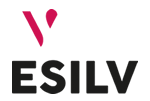BIM or Building Information Modeling is a process involving the generation, management and visualisation of digital representations of construction data. At a time when environment is a growing concern, BIM is a major asset in the construction and renovation work industries.
Over the last decade, BIM has transformed the industry, helping to increase time and cost efficiency. Here are three projects using the BIM method, led by fifth-year New Energies major students.
BIM simulation of a gymnasium
A project by Marion DUSSOUILLEZ, Allahma Al Redwan KHAN, Kévin MARY and Dina MAZLOUM
The BIM is an answer to minimize the consumption of electricity, water and thermal losses of a building from the design of a structure, and throughout its entire life cycle. It has 7 dimensions: x, y and z coordinates (3D representation of the structure), time, costs, environmental energy efficiencies, life cycle.
This project involves renovating a gymnasium using the BIM method. The students have set a budget of €750/m², excluding maintenance costs.
To compare the contribution of renewable energies in the consumption of the building and to draw conclusions as to their degree of importance, they came up with several solutions within their budget.
The first solution is the 3D modelling of the gymnasium, renovated by keeping in mind that they wanted to avoid as many heat losses as possible. This solution is made to be connected to the conventional power grid. For the second solution, they will include renewable energies (solar panels with batteries).
The students will make a judicious choice of the materials to be used to make this gym less energy consuming as well as the use of energy-saving electronic devices equipped with sensors to monitor the consumption of this gym. This project highlights the use of the BIM method which is in full expansion.
BIM modelling of the structure of an energy autonomous tiny house
A project by Zainab ABOUELADL, Mathilde FEZARD, Sofia GACEM and Valentin ROSSI
A tiny house is halfway between a small house and a caravan. It is located on a trailer allowing it to be towed and taken everywhere. Providing carers with a tiny house could be a possibility to make up for the lack of medical assistance in rural areas. Tiny houses will grant care givers greater mobility.
The tiny house will have to be autonomous in energy for a week and respect highway code. The tiny house must also be environment-friendly and minimize its carbon footprint during its life cycle. The students worked on the tiny house structure and modelling.
The students planned a low maintenance cost, low energy consumption budget. They imagined the tiny house should be autonomous for a week, for one person to use water, electricity, air conditioning and heating. Impact on the environment is low.
Finally, a major aspect of this project is the collaborative and interoperability aspect implemented by the BIM process. This standard work methodology is based on digital tools that make it possible to create shared virtual models. These models gather all information necessary for the construction of a building. In that way, BIM facilitates design and improves collaboration throughout the project.
BIM modelling of a tiny house designed for medical staff
A project by Ismaïl BEN HARIZ, Maxime PALLARDY, Julien PLANQUETTE and Dylan PORTELA
This industrial innovation project was conducted in partnership with two companies: Next Gen Village and Smart Use. These companies want to design tiny houses for personal or professional use for medical staff to be able to move in rural areas without care givers while being energy independent.
In order to be able to carry out collaborative work, the students used a working method based on BIM. Added to this, a 3D digital model gathered all the tiny house information.
Students decide to decided to implement 17m² of photovoltaic solar panels with a total power of 3kWc to use the most of renewable energies. A battery system added to store the electricity produced. This electricity is used to power the LED lighting, the kitchenette equipment as well as the sanitary installation.
For sanitary equipment, a thermodynamic water heater using the calories from the air provides the small house with sanitary hot water and a shower system. Moreover, two tanks are installed under the floor to store water and collect wastewater. The heating is provided by a heating floor with a circulation of hot water from the thermodynamic water tank.
Finally, to cover any breakdown, there is a presence of an external electrical outlet to connect to an external power grid.
More information about ESILV’s programme and its project-based educational approach.
This post was last modified on 21 March 2018 5:05 pm









